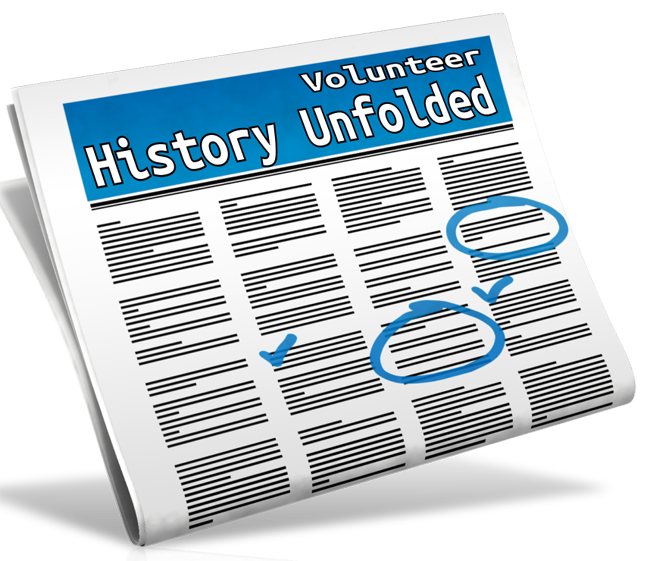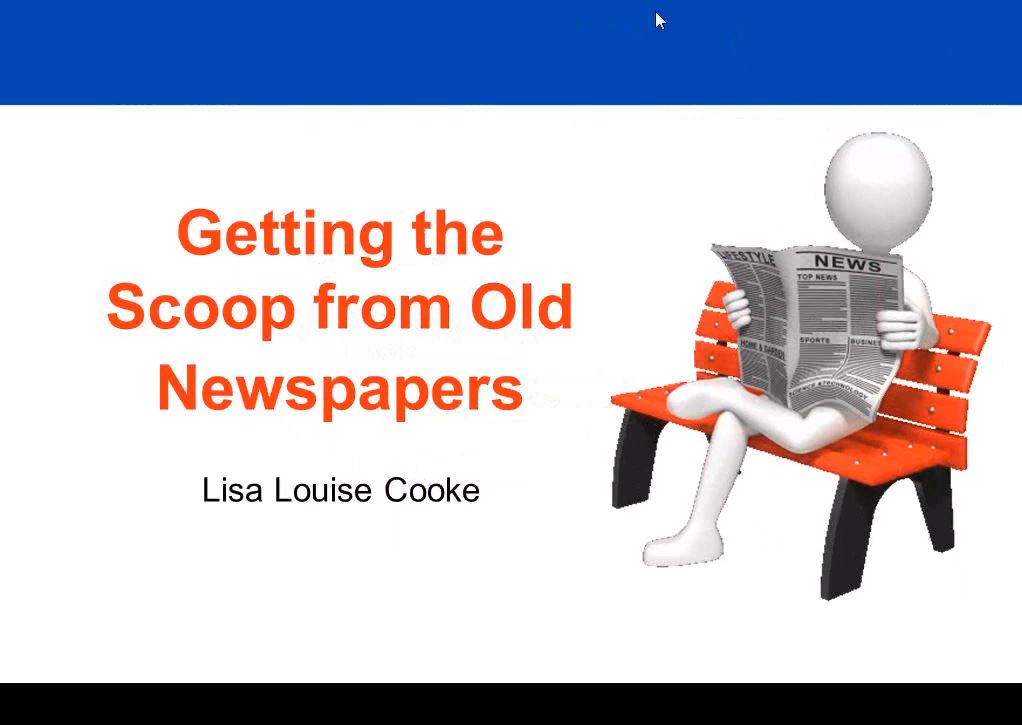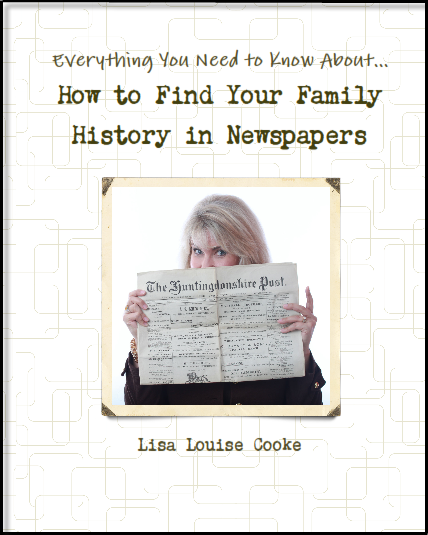by Lisa Cooke | Apr 5, 2013 | 01 What's New, Canadian, FamilySearch, Research Skills
“One of the most incredible and likely true stories I’ve ever seen!” announced Dave Obee as he met with Genealogy Gems Listener Sarah Stout, the winner of our #RootsTech 2013 conference registration contest.
The question to contestant was “who’s class would you most like to attend at RootsTech?” Sarah’s answer was Dave Obee, and that was because she was  running up against a Canadian brick wall in her family history research, and Dave is a Canadian Research Guru!
running up against a Canadian brick wall in her family history research, and Dave is a Canadian Research Guru!
Read more about Sarah’s incredible genealogical brick wall:
WATCH THE VIDEO
In my new video at the Genealogy Gems YouTube channel I get the two together and Dave dishes up 10 terrific tips that will not only help Sarah, but are sure to prove their worth in your own family tree climbing.
Dave Obee’s Top 10 Tips:
1. Create a Timeline – “plot her life…it’s easier to see the holes.”
2. Understand Geography – “plot movements”
3. Find Every Possible Record
4. Understand How Records Were Created
5. Read Every Local Story in Newspapers at that Time
6. Tap into Local Knowledge – “Locals know more” (historical and genealogical societies)
7. Go There if You Can in Person
8. Look for Negative Proof
9. Collaborate with Other Researchers
10. Be Diligent About Proof
Resources Mentioned in the video:
Subscribe to the Genealogy Gems YouTube Channel for free to receive instant updates of all of my latest videos from RootsTech 2013 and beyond.
by Lisa Cooke | Nov 25, 2013 | 01 What's New, Collaborate, Evernote
In this installment of the Collaborative Genealogy blog post mini-series I’m going to share one of my favorite ways to organize and share family history data and  source material: Evernote.
source material: Evernote.
Evernote is a free software, website and app that can hold both research content and the source citation information that goes with it. You can pull data from websites and Evernote will often automatically capture information about the site you got it from. You can upload images, scanned documents and other multimedia content. And of course you can use it to keep track of non-electronic sources, too.
Research teams using Dropbox put themselves on the same page–literally. It’s easier to be sure you’re looking at the same sources. It’s easy to add notes like data you’ve abstracted from the source (or that seems to be missing from the source). It’s easy to tag data: every source that cites an ancestor can be tagged with her name. That way, when you are ready to analyze or write up someone’s life story, every piece is there. No more hunting for sources you knew you had somewhere!
 My recent post provides two tips for using Evernote and introduces my Evernote for Windows for Genealogists Quick Reference Guide “cheat sheet” (click here for U.S. and here for international shipping). It’s been so popular since its release that we sold out for a while, but it’s back in stock. This 4-page laminated guide offers at-a-glance training and reminders so you can be up to speed quickly using Evernote for genealogy.
My recent post provides two tips for using Evernote and introduces my Evernote for Windows for Genealogists Quick Reference Guide “cheat sheet” (click here for U.S. and here for international shipping). It’s been so popular since its release that we sold out for a while, but it’s back in stock. This 4-page laminated guide offers at-a-glance training and reminders so you can be up to speed quickly using Evernote for genealogy.
Want to learn more about using Evernote? Click here for tips and complete resources on getting started in Evernote, like a complete video mini-series that walks you through the process of signing up for your free Evernote account, downloading the desktop app, getting and using the web clipper….There’s so much you can do with Evernote and I show you how!
For more on collaborative research (including more on Evernote for genealogists), check out the December 2013 issue of Family Tree Magazine. It’s got an article I’ve co-written with Genealogy Gems Contributing Editor Sunny Morton.
Check out my other blog posts in this series on collaboration:
Tips for Collaborative Genealogy: Research with a Partner
Tips for Collaborative Genealogy: Dropbox for Genealogists
Tips for Collaborative Genealogy: Sharing Genealogy Files Online for Free
by Lisa Cooke | Nov 4, 2013 | 01 What's New, Newspaper
Does your local library, historical or genealogical society have a newspaper collection to share? Let the NEH help!
The National Endowment for the Humanities (NEH) is accepting proposals from institutions hoping to participate in the the National Digital Newspaper Program (NDNP). This program creates “a national, digital resource of historically significant newspapers published between 1836 and 1922 in U.S. states and territories.” Guidelines for 2014 are now available and proposals must be submitted by January 15, 2014.
According to the press release, “Each award supports a 2-year project to digitally convert 100,000 newspaper pages from that state’s collections, primarily from microfilm negative. Titles may be printed in Danish, English, French, German, Hungarian, Italian, Norwegian, Portuguese, Spanish or Swedish. The program provides access to this resource through the Chronicling America web site hosted by the Library of Congress. The site currently includes more than 6.6 million newspaper pages in English, French, German, and Spanish, from more than 1100 titles digitized by institutions in 30 states.”
For more program information, please visit the NEH’s program page or this page for technical information from the Library of Congress. Click here to see what institutions have participated.
I can’t say enough good things about this and other initiatives to support more digitized newspapers online. My book How to Find Your Family History in Newspapers will provide you with more about using these awesome resources to flesh out your family’s story, a tried and true research process, and loads of resources. Check it out in paperback or pdf e-book!
by Lisa Cooke | Nov 29, 2013 | 01 What's New, Newspaper
Recently I did a webinar for Legacy Family Tree called “Get the Scoop on Your Ancestors with Newspapers.” Soon after, I heard from a happy student  named Christina.
named Christina.
“I just had to let you know how grateful I am to you,” she writes. “I finally had a chance to utilize the information you shared and wanted to check out the websites you talked about. I started with the Stanford Data Visualization and the very first newspaper I opened online had one of my ancestors on the front page. WOW! When I went into my Legacy program I discovered that I already had that information, but now I also had a verification.”
She goes on to say she started reading through more newspaper issues, which were so interesting she kept getting distracted. She found another ancestor mentioned in a political newspaper and guesses she’s just discovered his political affiliation.
Then she tells me about a longtime family mystery she decided to try to solve in newspapers. “My cousin’s daughter contacted me about a year ago for information about a child that died in the same time period that the local court records were lost in a fire. I didn’t think we would ever get the information. But I thought I would use the date that we had and start with any paper I could get online, starting the day after. I wasn’t sure it would hit papers that soon in that time period, but I had to start somewhere. Lo and behold, her death notice was on page 4 of the first paper I opened!”
“I realize I am very lucky to have found so much right away and it won’t happe

Available at http://genealogygems.com
n every time, but I am encouraged that your training was so helpful that I am going to break through a lot of walls. Again, Thank you so much for sharing your knowledge.”
I’ve heard countless stories like these from so many people who have discovered their family histories in newspapers. A video version of my newspaper class is available as part of Genealogy Gems Premium Membership, along with over a dozen other instructional videos, and over 100 exclusive podcast episodes. Starting today 11/29/13 through Monday 12/2/13 when you purchase a 1 year membership you will get an exclusive free ebook. Click here for all the details.
You can also get my complete newspaper research method in my book: How to Find Your Family History in Newspapers, available in print and as an e-book. And also starting today 11/29/13 through Monday 12/2/13 you can get it as part of a special book bundle or ebook bundle at a 40% savings.
by | Mar 5, 2014 | 01 What's New, Certification
 Do you want to become a professional genealogist–or just research like one?
Do you want to become a professional genealogist–or just research like one?
The Board for Certification of Genealogists (BCG) recently released an updated, revised version of Genealogy Standards in honor of its 50th anniversary. It’s a 100-page paperback manual that presents “the standards family historians use to obtain valid results.”
They also just announced that, effective March 3, 2014, the new BCG standards apply to anyone who applies for professional certification or recertification through BCG.
“As the standards are at heart unchanged, genealogists whose work meets the old standards should meet the new standards as well,” states a press release. “The revision, however, means the new standards offer superior guidance as to the qualities necessary for credible genealogical work.”
To help researchers familiarize themselves with the recent changes, BCG has also released two charts that compare the new and old standards. They can be downloaded from the “Skillbuilding” page of BCG’s website.
 running up against a Canadian brick wall in her family history research, and Dave is a Canadian Research Guru!
running up against a Canadian brick wall in her family history research, and Dave is a Canadian Research Guru!
 source material: Evernote.
source material: Evernote.

 named Christina.
named Christina.
